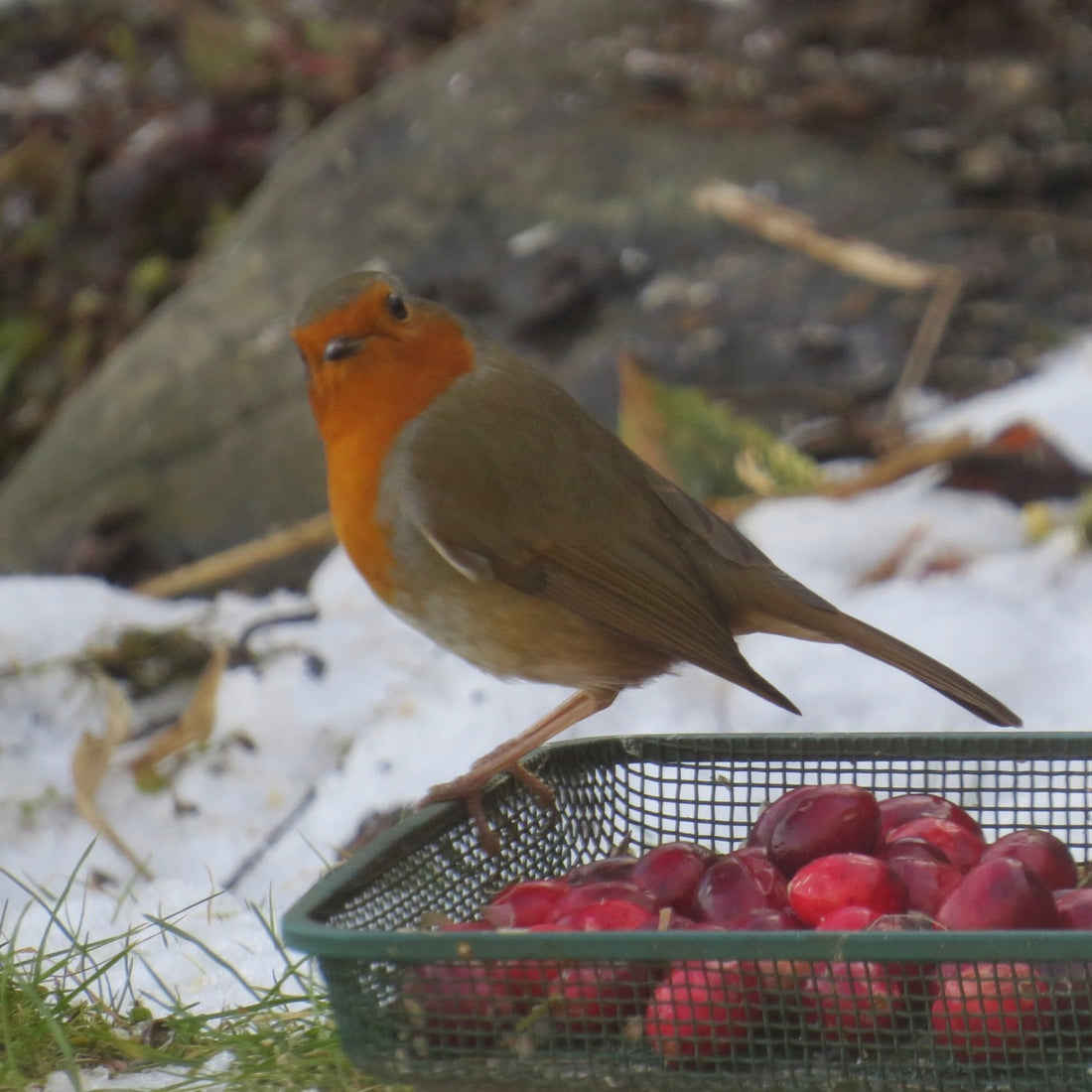
Christmas birds
I love how birds have been embedded in UK folklore for years and I love reading about how birds are featured in our social history. I have included that interest on the tea-towels we launched this autumn in our online shop. They have the common names used for swallows and oystercatchers across the UK, from Shetland to Cornwall, from Norfolk to Wales. Christmas time is no different, with many birds featuring in our yuletime traditions in the UK. I guess the two that instantly come to mind are the Robin and the Turkey.
 The Robin is featured on cards and wrapping paper, and has even been featured on Christmas stamps. In the Victorian times, postmen were known as "robins" because they had red breasted jackets. The robin was then depicted on christmas cards to represent the postman who delivered the cards.
The Robin is featured on cards and wrapping paper, and has even been featured on Christmas stamps. In the Victorian times, postmen were known as "robins" because they had red breasted jackets. The robin was then depicted on christmas cards to represent the postman who delivered the cards.
Turkey is a relatively modern addition to the christmas feast. In the olden days it was more likely to be swan, pheasant or peacock that was eaten, or if you were lucky a roast boars head decorated with fruit. Edward VII made turkey a fashionable meat for a christmas feast, but it didn't become commonplace until the 1950s when refridgerators were invented.
However, I have recently found an article on the British Bird Lovers website that talks through the 12 days of Christmas song and sees a feast of game birds that the true love has provided to declare love over the 12 days of christmas. They say the way to a lovers heart is food...
On the first day of Christmas my true love sent to me, a partridge in a pear tree.
This one is quite obvious, although a partridge is a ground feeding bird so i'm not sure why its in pear tree but it would have been a bird that was eaten at a Christmas feast so a good gift.
On the second day of Christmas my true love sent to me, two turtle doves and a partridge in a pear tree.
Turtle Doves were also eaten at feasts and would have featured at a Christmas feast. They are quite a small bird and are usually more of a summer migrant these days, but would have been a nice treat to receive.
On the third day of Christmas my true love sent to me, three french hens, two turtle doves and a partridge in a pear tree
There are four types of french hen, one of which is the Faverolle Hen which is well known for laying lots of eggs in the wintertime. So this would have been a very useful gift!
On the fourth day of Christmas my true love sent to me four calling birds, three french hens, two turtle doves and a partridge in a pear tree
The calling birds used to be "colly" birds which is actually an old word for black. This would have been 4 blackbirds, as in the baked in a pie rhyme. More food for the table.
On the fifth day of Christmas my true love sent to me five gold rings, four calling birds, three french hens, two turtle doves and a partridge in a pear tree
If we stick to the food for the table theme, British Bird Lovers say this could mean ring necked pheasants which would definitely have featured on a feasting table.
On the sixth day of Christmas my true love sent to me six geese-a-laying, five gold rings, four calling birds, three french hens, two turtle doves and a partridge in a pear tree.
The grey-lag goose was traditionally eaten at Christmas so on the 6th day more food for the table!
On the seventh day of Christmas my true love sent to me seven swans a swimming, six geese-a-laying, five gold rings, four calling birds, three french hens, two turtle doves and a partridge in a pear tree.
Swans may now be a protected species in the UK but Mute Swans used to be eaten at feasts. They, along with peacocks, storks and other birds we no longer eat were eaten at big feasts.
On the eight day of Christmas my true love sent to me eight maids-a-milking, seven swans a swimming, six geese-a-laying, five gold rings, four calling birds, three french hens, two turtle doves and a partridge in a pear tree.
The Britishbirdlovers site claims this would be cattle egrets as they hang around cattle to feed on the invertebrates that they uncover when tromping in the field. I like this idea, but cattle egrets come from the tropics so I'm not sure how this would have arrived in the UK.
On the ninth day of Christmas my true love sent to me nine ladies dancing, eight maids-a-milking, seven swans a swimming, six geese-a-laying, five gold rings, four calling birds, three french hens, two turtle doves and a partridge in a pear tree.
 Cormorants drying their wings and doing their courtship dance look a bit like ladies dancing. Another bird for the table.
Cormorants drying their wings and doing their courtship dance look a bit like ladies dancing. Another bird for the table.
On the tenth day of Christmas my true love sent to me ten lords-a-leaping, nine ladies dancing, eight maids-a-milking, seven swans a swimming, six geese-a-laying, five gold rings, four calling birds, three french hens, two turtle doves and a partridge in a pear tree.
According to BritishBirdLovers website the lords-a-leaping refers to Grey Herons. When they take off they could look like gentlemen leaping. So there's the tenth bird for the feast.
On the eleventh day of Christmas my true love sent to me eleven pipers piping, ten lords-a-leaping, nine ladies dancing, eight maids-a-milking, seven swans a swimming, six geese-a-laying, five gold rings, four calling birds, three french hens, two turtle doves and a partridge in a pear tree.
Waders make a peeping noise when they take off. Sandpipers this noise and so we can agree they, although small, could be another addition to the feast table.
On the twelfth day of Christmas my true love sent to me 12 drummers drumming, eleven pipers piping, ten lords-a-leaping, nine ladies dancing, eight maids-a-milking, seven swans a swimming, six geese-a-laying, five gold rings, four calling birds, three french hens, two turtle doves and a partridge in a pear tree.
And finally drumming birds - great spotted woodpeckers. A veritable meat feast - 12 different birds over the 12 days following Christmas!
The idea of killing and eating all these birds may seem barbaric to many, and certainly goes against the conservation rules of today. However, we need to remember that in the days that this was written, all of these birds would have been much more common place. I read an interesting article in The New Scientist the other day about the normalisation of nature. We see the "normal" levels of nature to be those we encounter as a child growing up. To those born in the early 1900s this will be very different to those born in the early 2000s. In the 1780s when this song was written and even early 1900s when it was translated to the version we hear today, the populations of these birds would have been very different. The version we hear now is a translation of the original song, and the original had a "beautiful peacock" instead of a partridge in a pear tree! There are many theories around the song's origin. I have, however, loved reading about the links to birds we know and the ideas behind the song.
On that note, we, at Sandra Vick Ltd, would like to wish you all a wonderful christmas day and hope that whatever you have on your table today is tasty.
